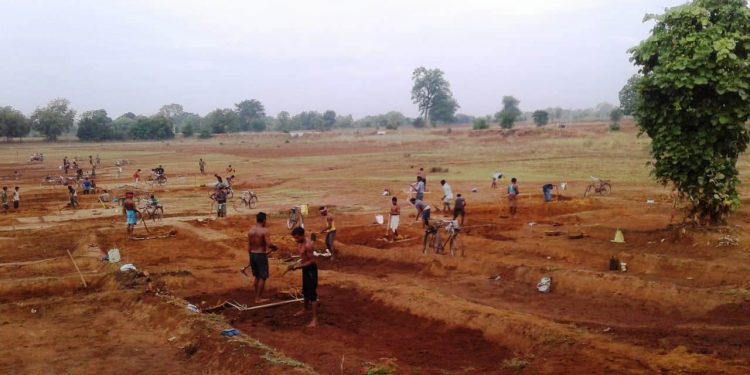Bolangir: Even as the Bolangir administration is facing the challenge of providing jobs to migrant labourers in this non-industrial district, the MGNREGS scheme has come to the help of Odia returnees amid the lockdown.
According to reports, over 60,000 people have already returned to the district. In these tough times, taking care of the lives and livelihood of such a large number of people has been a tough task for the administration.
However, the district has set an all time record by providing work to returnees in Bolangir district under the Mahatma Gandhi National Rural Employment Guarantee Scheme since its inception.
Under this scheme, 1,02,697 migrant workers worked in a single day June 4 as against 1,00,157 persons working on the previous day. The workers belonged to 14 blocks of Bolangir district.
Such a large number of workers belonging to one district and working in a single day is said to be the fourth case after Mayurbhanj, Ganjam and Keonjhar districts. Over Rs 44,10,00,000 has already been spent under the scheme during the months of April and May, District Rural Development Agency (DRDA) sources informed.
Rs 38,92,00,000 was paid during the same period of which 99.28% payments was made on time. Nearly, 62.21 per cent of the funds under the Natural Resource Management (NRM) programme has been spent.
By Thursday, 90,992 muster rolls have been issued and 13,45,606 work days created. Reacting to this, DRDA project director Maheswar Swain said, “We are giving emphasis on providing maximum work to MGNREGS beneficiaries, timely payment of wages and proper management of natural resources. As COVID-19 outbreak has impacted lives and livelihood in the district, we are attaching importance to generation of employment opportunities.”
There is a provision to engage maximum number of workers in at least six migrant-prone blocks in Bolangir district for 200 work days in a year and 100 days in eight other blocks. Such a large number of people working in a single day during the lockdown is a healthy sign, Swain added.
The highest number of 12,674 workers were from Bangomunda. This was followed by 11,163 workers from Muribahal, 10,942 workers from Khaprakhol, 9,661 workers from Saintala, 8,369 workers from Titilagarh, 7,134 workers from Patnagarh, 6,271 workers from Belpada, 5,991 workers from Bolangir Sadar, 5,721 workers from Tureikela, 5,410 workers from Agalapur, 5,312 workers from Deogaon, 5,144 workers from Loisingha, 4,622 workers from Puintala and 4,283 workers from Gudvela blocks, officials said.






































